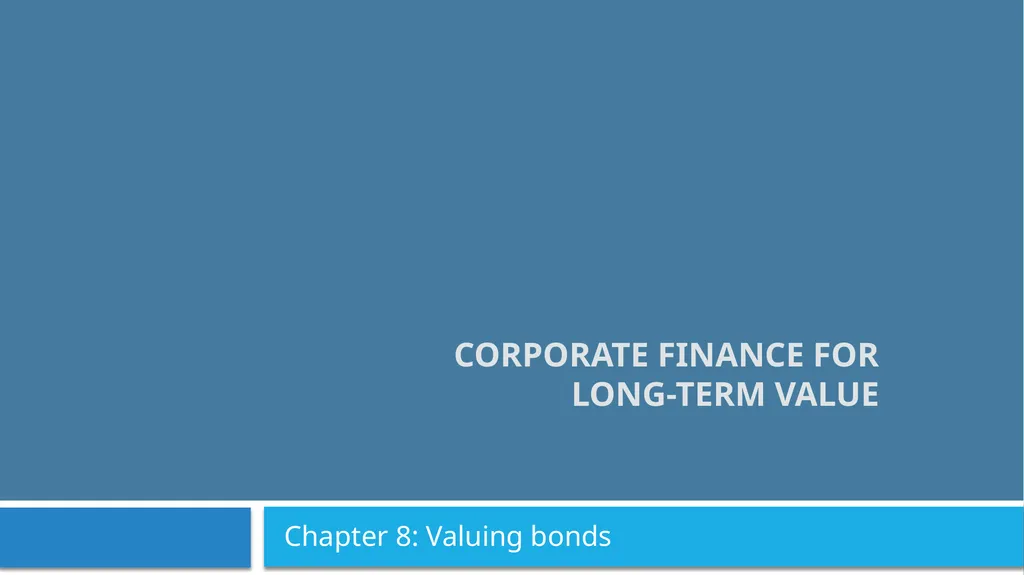Corporate Finance for Long-Term Value Chapter 8:
Author : giovanna-bartolotta | Published Date : 2025-05-16
Description: Corporate Finance for LongTerm Value Chapter 8 Valuing bonds Chapter 8 Valuing bonds Part 3 Valuation of companies The BIG Picture 3 Corporate bonds are a key financing tool for companies Traditional valuation Bond investors are more
Presentation Embed Code
Download Presentation
Download
Presentation The PPT/PDF document
"Corporate Finance for Long-Term Value Chapter 8:" is the property of its rightful owner.
Permission is granted to download and print the materials on this website for personal, non-commercial use only,
and to display it on your personal computer provided you do not modify the materials and that you retain all
copyright notices contained in the materials. By downloading content from our website, you accept the terms of
this agreement.
Transcript:Corporate Finance for Long-Term Value Chapter 8::
Corporate Finance for Long-Term Value Chapter 8: Valuing bonds Chapter 8: Valuing bonds Part 3: Valuation of companies The BIG Picture 3 Corporate bonds are a key financing tool for companies Traditional valuation Bond investors are more focused on downside protection Government bond yield (benchmark) + spread for credit & liquidity risk = corporate bond yield New valuation Integrate social and environmental factors into credit risk Emergence of green bonds and sustainability-linked bonds The bond market 4 Bonds are certificates of debt that promise payment of the borrowed amount plus interest by a specified future date Bonds are issued by: A government A company A financial institution Sources: SIFMA (2021); McKinsey (2022); BIS debt securities statistics. Bond payments 5 A bond certificate indicates the amounts and dates of all payments (principal + interest) to be made The maturity date of the bond is the final repayment date, and the time until the maturity date is the term of the bond Two types of payments made on a bond: Promised periodic interest payments, called coupons Principal / face value of the bond, to be paid at maturity Types of bonds 6 Government / sovereign bonds are issued by national governments (countries) Corporate bonds are issued by companies or financial institutions Secured bonds contain assets as collateral (i.e. mortgage bonds) Unsecured bonds have lower seniority / priority Bond valuation 7 Bond valuation 8 Bond valuation 9 Bond valuation 10 The relationship between bond yields and bond prices is maintained through market forces: As interest rates and bond yields rise, bond prices fall And vice versa: As bond yields fall, bond prices increase This means bonds can trade at: A premium – a price greater than face value A discount – a price lower than face value Par – a price equal to face value this is rare! Zero-coupon bonds 11 Interest rate changes 12 Duration 13 Calculating the duration of 5% six-year bond with a YTM of 4% Duration (5.3 years) is typically close to maturity (6 years), because of large weight of face value Duration is good measure of interest rate risk of bond, where higher duration reflects higher interest rate risk Term structure of interest rates 14 Government bond yield 15 Source: World Government Bonds Government bonds are the safest and most liquid bonds serve as benchmark risk-free rate Yields on coupon bonds with the same maturity 16 Bonds














